Rescuers came across a post on Facebook of a concerned hooman stating that her neighbors, who hadn’t been home for a month, left behind two dogs chained in their backyard.
She also stated that, while recently walking past the house, she noticed a really bad smell coming from the yard.
The rescuers, fearing the worst, contacted the girl but they did not get any answer. Since they knew that they didn’t have any time to waste, they decided to head to the area and try to find this home themselves.
Search And Rescue Mission
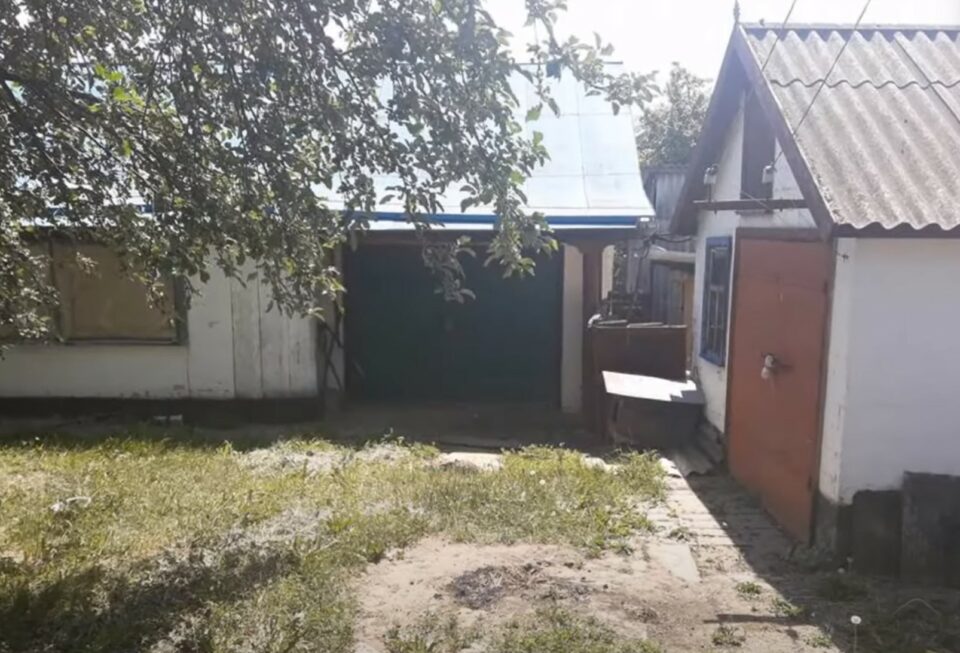
As soon as they arrived, they started asking people on the streets if they knew or had any information about these two pups.
After three hours of searching, they finally found the house!
They were forced to break the lock to get in the backyard, and as soon as they did, they were met with a terrible smell.
They caught a glimpse of something lying on the grass, and when they got closer, they noticed that it was an extremely malnourished pup.
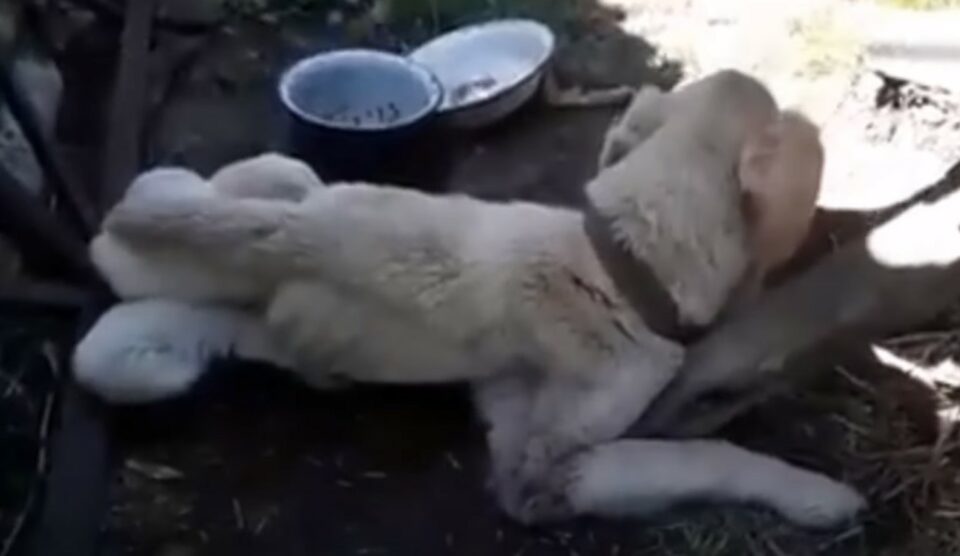
While freeing the pup and trying to get him on a leash, they noticed that the other pup unfortunately did not make it.
Heartbroken, they were determined to get the other pup, a male Labrador, all the help he needed since he was only skin and bones, starving and terribly sick.
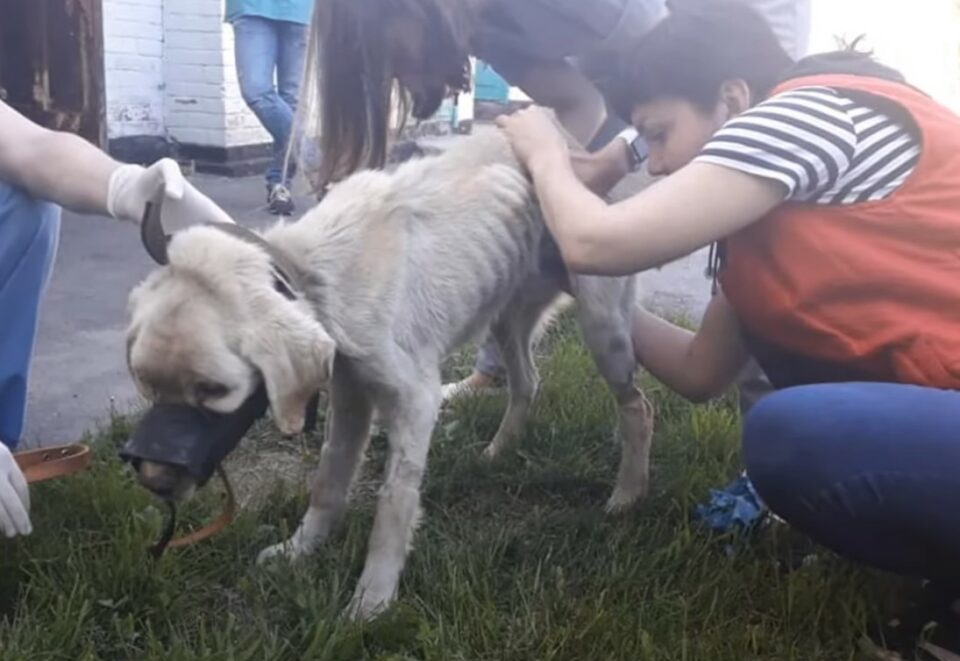
The rescuers immediately carried this sweet boy to their car and rushed him to the vet. Even though he was very scared of his rescuers, he still decided to cooperate. It was as if he knew that they were about to change his life for the better.
New Chapter
After his medical examination, the vets determined that it would be for the best if he stayed at the clinic under close examination.
Luckily, after receiving a blood transfusion, the pup’s appetite increased, and he was able to clean up every bowl his hoomans brought. This was a very good sign!
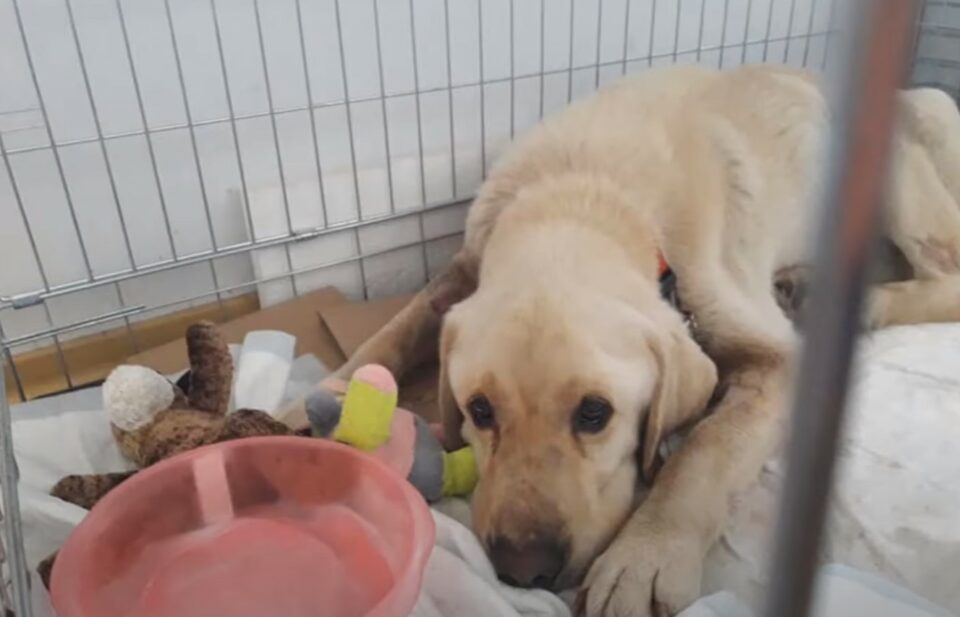
Not long after being rescued, the doggo, now named Boss, came out of his shell and started to show clear signs of recovery.
His health started to improve, he gained a lot of healthy weight, and he became one happy dog.
In no time, he was discharged from the clinic and was able to move into a loving foster home, and they made sure that he had everything he needed and so much more.

Foster care truly did wonders for Boss, as he was able to make a full recovery.
He transformed into the happiest, most playful pup ever who loved being alive. Soon, he found himself a family who fell in love with him as soon as they met him so they decided to adopt him.
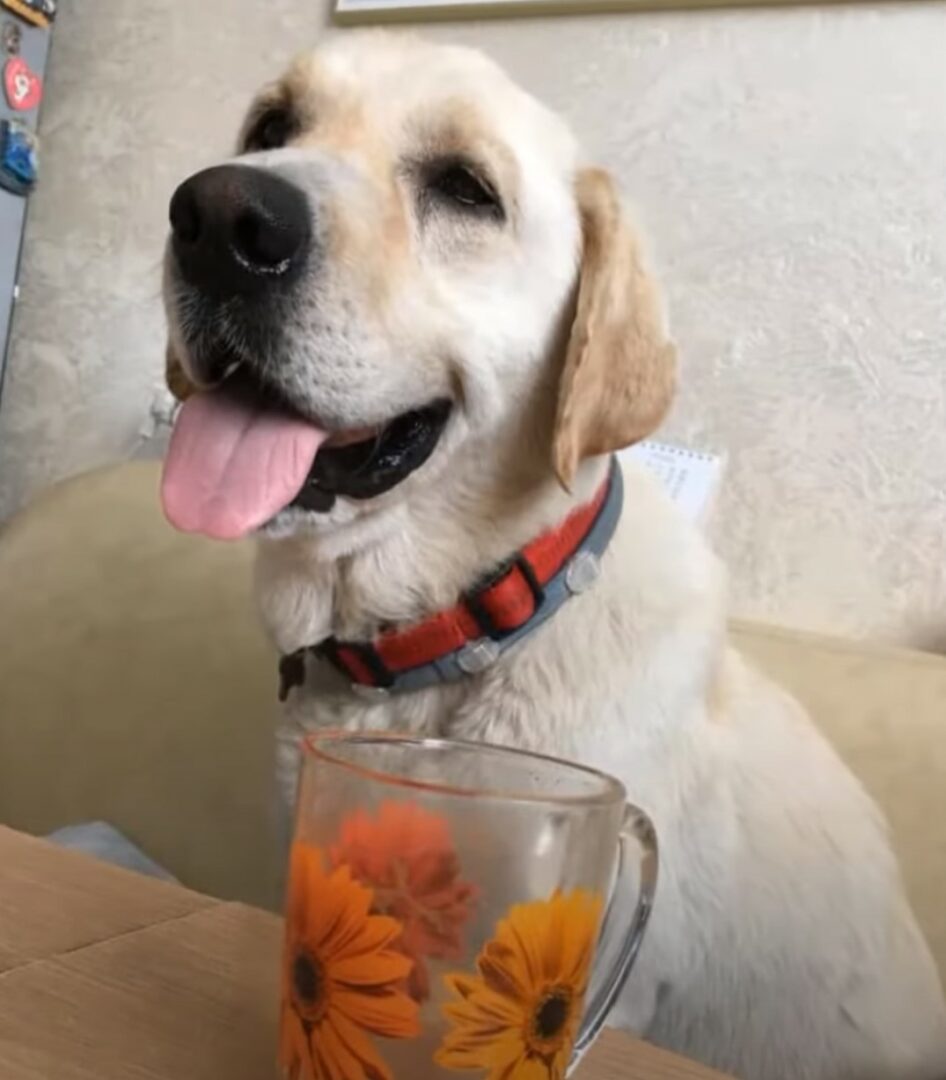
Boss now not only has a loving family but also an adorable furry sibling who loves having fun playdates with him.
This sweet boy is finally living a life he always deserved – full of happiness, love, and friendship.
Final Word
Unfortunately, there are many instances where dogs are cruelly abandoned by their owners without being given a second chance.
Animals have emotions, too, and when they are suddenly dumped, they may become depressed or even aggressive.
So, please, if you are moving or simply not able to care for your pets anymore, don’t leave them behind. Instead, take them to your local animal shelter and provide them with a chance for a new life. You owe them at least that.
If you’ve ever noticed your furry companion panting for no apparent reason, you’re not alone. As a seasoned dog trainer, I’ve seen this behavior in many pups, leaving pet owners puzzled. Your dog’s panting could be a signal of various underlying factors that may not be immediately obvious. Understanding the reasons behind this behavior is crucial for your pet’s well-being and your peace of mind.
Panting is a common way for dogs to regulate their body temperature, but excessive or unexplained panting could indicate something more. It’s essential to pay attention to your dog’s panting patterns and recognize when it deviates from the norm. In this article, we’ll explore some possible reasons why your dog may be panting without a clear cause, helping you become more attuned to your furry friend’s needs.
Understanding Dog Panting
Normal Panting Behavior in Dogs
Dog panting is a common way for them to cool down as they cannot sweat like humans. It’s normal for dogs to pant after physical activity, during warm weather, or when they’re excited. This behavior helps regulate their body temperature. They may also pant when experiencing stress or anxiety.
Signs That Panting Is Not Normal
While panting is a typical behavior, excessive or unexplained panting can indicate an underlying issue. If you notice your dog panting excessively without any apparent reason, it could be a sign of pain, heatstroke, obesity, or a medical condition like heart or lung disease. Watch out for other symptoms like lethargy, drooling, or coughing, which may indicate a problem. If your dog’s panting behavior deviates from what’s normal for them, it’s essential to consult a veterinarian to ensure their well-being.
Common Causes of Unexplained Panting
The Heat Factor and Overexertion
Dogs pant to regulate their body temperature. If your furry friend has been playing vigorously, out for a walk in hot weather, or in a stuffy environment, panting is their natural cooling mechanism. Overexertion or excessive heat can lead to heavier panting. Ensure they have access to water and a comfortable resting place to cool down.
Stress, Anxiety, and Fear
Just like humans, dogs can feel stress, anxiety, or fear, leading to increased panting. Loud noises, new environments, separation anxiety, or traumatic experiences can trigger panting as a response to these emotions. Creating a calm and safe space for your dog, using comforting routines, or seeking professional help can help alleviate their stress and reduce panting.
Pain or Discomfort
Unexplained panting in dogs could be a sign of pain or discomfort. Dental issues, arthritis, injuries, or internal problems may cause your dog to pant excessively. If you notice panting along with other signs like lethargy, decreased appetite, or restlessness, it’s essential to have them checked by a veterinarian to address any underlying health issues.
Breed-Specific Respiratory Issues
Certain dog breeds are prone to respiratory problems due to their unique anatomy. Brachycephalic breeds like Bulldogs or Pugs have shorter airways, making it harder for them to breathe efficiently, leading to increased panting. If you have a breed with known respiratory issues, monitor their panting patterns and consult with a vet if you notice any changes or concerns.
Health-Related Reasons for Excessive Panting
Heart Disease and Panting
When your dog pants excessively, it could be a sign of underlying heart disease. Just like in humans, heart issues can cause breathing difficulties in dogs. If you notice your furry friend panting a lot without a good reason, it’s essential to consult your vet to rule out any heart-related problems.
Respiratory Disorders
Dogs can develop respiratory disorders that lead to excessive panting. Conditions like asthma, pneumonia, or even a collapsing trachea can make breathing difficult for your pet. If your dog’s panting seems out of the ordinary or is accompanied by coughing or wheezing, it’s crucial to seek professional advice to address any potential respiratory issues.
Hormonal Imbalances
Hormonal imbalances in dogs can also contribute to abnormal panting. Issues with the thyroid or adrenal glands can disrupt your pet’s hormonal levels, affecting their breathing patterns. If you notice your dog panting excessively along with other symptoms like weight changes or lethargy, speak to your vet about possible hormonal imbalances.
Poisoning and Toxicity
Excessive panting could also indicate poisoning or toxicity in your dog. Ingesting toxic foods, plants, or chemicals can lead to panting as your pet’s body tries to rid itself of the toxins. If you suspect that your dog has been exposed to something harmful and they are panting heavily, seek immediate veterinary care to address the poisoning and ensure your dog’s well-being.
When to Be Concerned
Panting Accompanied by Other Symptoms
If your dog is panting excessively and you notice other symptoms like lethargy, pale gums, drooling, or vomiting, it could be a sign of a more serious issue. These accompanying symptoms may indicate pain, heatstroke, or potentially life-threatening conditions such as heart disease or toxicity. It’s essential to take note of these additional signs and seek veterinary assistance promptly.
Changes in Panting Patterns
Any significant changes in your dog’s panting patterns, such as sudden onset of heavy panting in a normally calm pet, irregular breathing, or prolonged panting without an obvious cause, should raise concerns. These alterations could be linked to respiratory problems like asthma or pneumonia, discomfort, anxiety, or underlying health issues. Monitoring and recognizing deviations in your dog’s panting behavior are crucial for timely intervention.
Behavioral Changes and Panting
Pay attention to your dog’s overall behavior alongside panting patterns. Unusual behaviors like restlessness, aggression, fearfulness, or seeking seclusion combined with excessive panting could signal distress or discomfort. Behavioral changes accompanied by excessive panting may indicate pain, anxiety, or other medical conditions that require attention. Understanding your dog’s typical behavior and recognizing deviations can help in identifying potential issues early on.
Diagnostic Approach for Panting in Dogs
Veterinary Examination and Questions
When you notice your dog panting excessively or for no apparent reason, it’s essential to schedule a veterinary examination. During the visit, your vet will ask you specific questions to gather crucial information about your dog’s panting episodes. They may inquire about the duration and frequency of the panting, any recent changes in your dog’s behavior or environment, and if there are any other accompanying symptoms like coughing or difficulty breathing. Providing detailed answers will assist the vet in assessing the potential causes of your dog’s panting.
Possible Tests and Analyses
Based on the information collected during the examination, your vet may recommend certain tests and analyses to further investigate the reasons behind your dog’s excessive panting. These tests could include blood work to check for underlying medical conditions, X-rays to examine the heart and lungs for abnormalities, or even an electrocardiogram (ECG) to assess your dog’s cardiac health. Additionally, your vet might suggest checking hormone levels or conducting a urinalysis to rule out any hormonal imbalances or urinary issues contributing to the panting. Following through with these diagnostic tests will help determine the precise cause of your dog’s panting episodes and guide appropriate treatment measures.
Treating Excessive Panting in Dogs
Managing Heat and Exercise
To assist your panting dog, ensure they have access to shade and fresh water on hot days. Limit exercise to cooler times like early morning or later evening. Use cooling mats or vests to help them cool down after activity.
Dealing with Stress and Anxiety
If your dog is panting due to stress, create a calm environment for them. Provide comforting toys or blankets and establish a routine to reduce anxiety. Consult a vet for advice on behavior training or calming supplements.
Medical Treatments for Underlying Conditions
When excessive panting is linked to a medical issue, treatments may involve medication, surgery, or therapy. Follow your vet’s guidance closely for conditions like heart disease, Cushing’s syndrome, or respiratory problems. Regular check-ups are crucial for monitoring progress.
Conclusion
Remember, your furry friend’s panting is usually a way to cool down, de-stress, or communicate. However, if you notice excessive or unexplained panting, it might be a sign of an underlying issue. Taking steps to manage heat, provide a stress-free environment, and seeking veterinary advice can help address these concerns. Keep an eye on your dog’s panting patterns and behavior, and don’t hesitate to reach out to your vet if you have any concerns. Your pup’s well-being is a top priority, so stay attentive and proactive in ensuring they are happy and healthy.
Frequently Asked Questions
Why do dogs pant?
Dogs pant to regulate their body temperature. It’s a natural cooling mechanism, especially after physical activity, in warm weather, or when stressed.
When should I be concerned about my dog’s panting?
Excessive or unexplained panting could indicate underlying issues such as pain, heatstroke, obesity, or medical conditions like heart or lung disease.
How can I help my dog with excessive panting?
Manage heat and exercise by providing shade, water, and limiting activity during cooler times. Address stress and anxiety by creating a calm environment and seek advice from a vet for behavior training.
What are the medical treatments for excessive panting in dogs?
Medical treatments may include medication, surgery, or therapy, depending on the underlying condition. Conditions like heart disease, Cushing’s syndrome, or respiratory problems may require specific interventions. Regular check-ups are essential for monitoring progress.
[no_toc]

Hey there, I’m Janet Brooks, a dog-loving student from California. I’m all about helping pups in need, especially those without homes. Me and my awesome friends work together to give shelter and love to stray dogs. Oh, and I also write blogs about dogs to share helpful info.